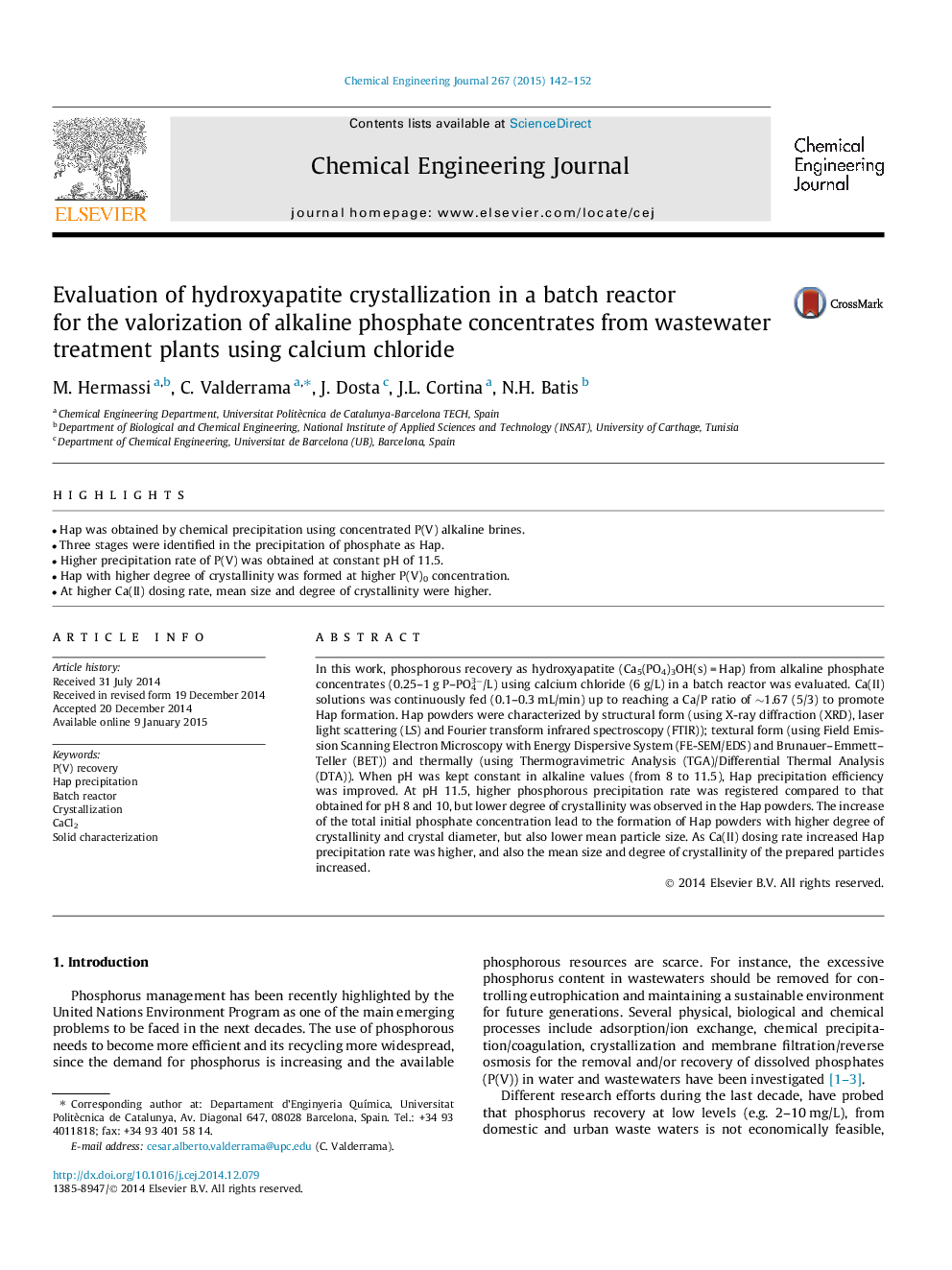| کد مقاله | کد نشریه | سال انتشار | مقاله انگلیسی | نسخه تمام متن |
|---|---|---|---|---|
| 146610 | 456374 | 2015 | 11 صفحه PDF | دانلود رایگان |
• Hap was obtained by chemical precipitation using concentrated P(V) alkaline brines.
• Three stages were identified in the precipitation of phosphate as Hap.
• Higher precipitation rate of P(V) was obtained at constant pH of 11.5.
• Hap with higher degree of crystallinity was formed at higher P(V)0 concentration.
• At higher Ca(II) dosing rate, mean size and degree of crystallinity were higher.
In this work, phosphorous recovery as hydroxyapatite (Ca5(PO4)3OH(s) = Hap) from alkaline phosphate concentrates (0.25–1 g P–PO43−/L) using calcium chloride (6 g/L) in a batch reactor was evaluated. Ca(II) solutions was continuously fed (0.1–0.3 mL/min) up to reaching a Ca/P ratio of ∼1.67 (5/3) to promote Hap formation. Hap powders were characterized by structural form (using X-ray diffraction (XRD), laser light scattering (LS) and Fourier transform infrared spectroscopy (FTIR)); textural form (using Field Emission Scanning Electron Microscopy with Energy Dispersive System (FE-SEM/EDS) and Brunauer–Emmett–Teller (BET)) and thermally (using Thermogravimetric Analysis (TGA)/Differential Thermal Analysis (DTA)). When pH was kept constant in alkaline values (from 8 to 11.5), Hap precipitation efficiency was improved. At pH 11.5, higher phosphorous precipitation rate was registered compared to that obtained for pH 8 and 10, but lower degree of crystallinity was observed in the Hap powders. The increase of the total initial phosphate concentration lead to the formation of Hap powders with higher degree of crystallinity and crystal diameter, but also lower mean particle size. As Ca(II) dosing rate increased Hap precipitation rate was higher, and also the mean size and degree of crystallinity of the prepared particles increased.
Journal: Chemical Engineering Journal - Volume 267, 1 May 2015, Pages 142–152
